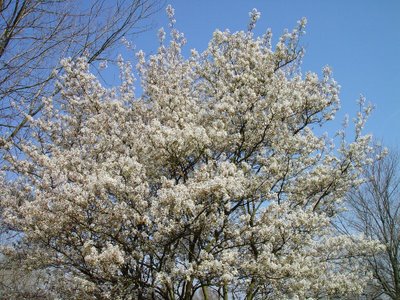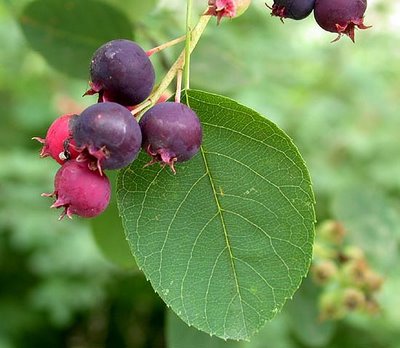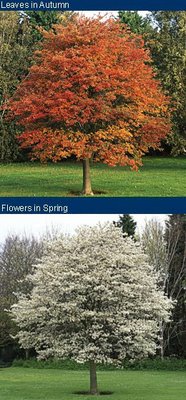More Pictures of Amelanchier lamarckii

Form: A deciduous, spreading shrub.
Hardiness: Fully Hardy
Height: 20ft (6m)
Spread: 12ft (4m)
Foliage: Having bronze, young leaves, which mature to dark-green, and turns brilliant red and orange during Autumn.
Flowers: From mid- to late Spring, as the leaves unfurl, producing abundant sprays of white, star-shaped blooms.
Garden care: To train as a standard tree select the strongest, straightest stem, removing all of the laterals up to 0.6-1.5m (3-5ft) from the ground in winter. Alternatively, to train as a multi-stemmed tree remove stems that are growing too close together back to ground level
Goes well with: Galanthus nivalis, Acer palmatum 'Osakazuki', Leucojum aestivum, Myrtus communis, Magnolia stellata, Chionodoxa luciliae 'Gigantea Group'
Cultivation:
For the best Autumn leaf colour, Amelanchier should be grown in full-sun or partial-shade in lime free (acidic) soil, although it will tolerate soil that is neutral, leaf colour suffers. As with most shrubs and trees that produce both an abundance of flowers and a superb Autumnal display, the soil should be fertile, well-drained, but never dry out completely. (Amelanchier. asiatica is lime-tolerant)
Prune during Autumn or early-Spring to train to shape.
Suckers that appear away from the plant should be removed during Winter.
Propagation:
Suckering varieties can be propagated by removing suckers and growing them on.
Stock of varieties where the branches sweep to the ground may be increased by layering (Pegging branches down in the soil, with a slight wound to encourage rooting)
Take greenwood or semi-ripe cuttings during Summer.
Sow seed outdoors as soon as it is ripe.
Fully Hardy
Pests & Diseases:
Fireblight, a fungal disease that causes branches to appear blacked or smoke damaged must be removed and burnt.









0 Comments:
Post a Comment
<< Home